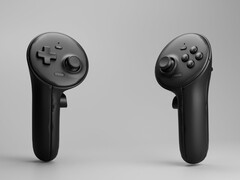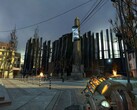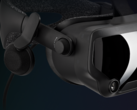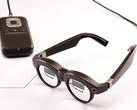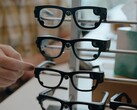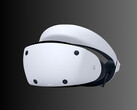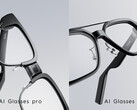Brad Lynch has discovered new details about the ongoing development of Valve's next virtual reality (VR) headset. Until now, Deckard has been viewed as a long-awaited successor to the Valve Index, which debuted almost six months ago. To that end, a recent rumour suggested that Valve is currently targeting a $1,200 launch price, up from the Index's original $999 MSRP.
Based on recent code changes, it seems that Valve has been developing Deckard around an ARM codebase. Specifically, a POC-F (proof-of-concept) prototype features a Snapdragon 8 Gen 3 (SM8650) chipset used in recent flagship smartphones like the OnePlus 12, Xperia 1 VI and the Galaxy S24 Ultra. As UploadVR notes, the Adreno 750 inside the Snapdragon 8 Gen 3 would theoretically provide this Deckard prototype with around 25% better performance and efficiency than the Snapdragon XR Gen 2 that underpins the Pico 4 Ultra, Quest 3 and Quest 3S (curr. $299 on Amazon).
The same prototype is said to leverage JDI-derived LCD panels that deliver a 120 Hz refresh rate and 2,160 x 2,160 pixels per eye across a 2.8-inch surface. On top of that, the prototype appears to support controller, headset and face tracking. Lynch stresses that the specifications associated with POC-F are not final.
Therefore, later prototypes and retail units will likely utilise newer or more advanced hardware. With that being said, POC-F looks to have been the final proof-of-concept before Valve moved onto engineering validation testing (EVT). If that is the case, we would not be surprised if future prototypes eventually emerge with similar hardware characteristics rather than a jump to a substantially more powerful chipset or completely different lenses that would require a full redesign. Currently, Valve is expected to release Deckard by the end of the year.
Deckard PoC-F used a Qualcomm SM8650 SoC for development. Also known as the Snapdragon 8 Gen 3 which has a GPU one generation newer than GPU In the XR2 Gen 2
— SadlyItsDadley (@SadlyItsBradley) March 21, 2025
It used 2.8” lpm026m648c LCD panels from JDI. 2160x2160 @ 120hz
It also had two eye tracking cameras, and 4 SLAM cameras https://t.co/kJtBqLqF2W pic.twitter.com/Lr0949JZLk
Source(s)
Brad Lynch via UploadVR, @Down_90 - Image credit




